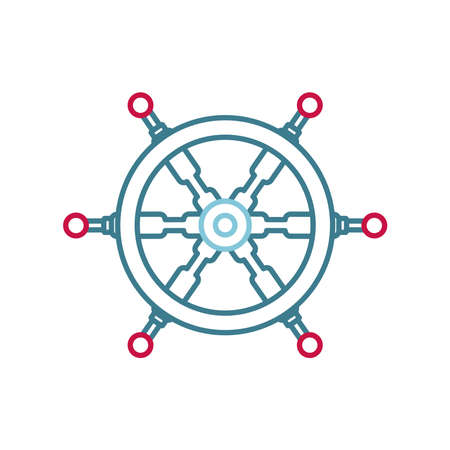1. Understanding Vastu Shastra and Its Importance in Workspaces
Vastu Shastra, an ancient Indian architectural science, has been guiding the design and layout of buildings for centuries. Rooted in traditional wisdom, Vastu offers principles that harmonise the five elements—earth, water, fire, air, and space—within any built environment. As Indian workplaces grow more dynamic and competitive, organisations are increasingly turning to Vastu Shastra to cultivate positive energy, enhance productivity, and promote holistic well-being among employees. In recent years, there has been a notable surge in awareness about how Vastu can influence not just the physical but also the psychological aspects of office life. By integrating Vastu guidelines—particularly the strategic use of colours—modern offices across India aim to create stress-free environments where individuals feel motivated and balanced. This renewed focus on aligning workspaces with Vastu principles reflects a broader cultural shift towards acknowledging the importance of mental health and overall harmony at work.
2. How Colours Influence Mood and Stress According to Vastu
Vastu Shastra, the ancient Indian science of architecture, places significant emphasis on the role of colours in shaping the energy and emotional climate of a workplace. According to Vastu principles, every colour is linked to specific elements and directions, each holding unique psychological and energetic impacts that can either alleviate or exacerbate stress levels among office occupants. Understanding this connection is key for Indian offices aiming to create harmonious and productive environments.
The Psychological Impact of Colours in Vastu
Colours are not just visual stimuli; in the Vastu context, they are powerful agents influencing our mental state. For example, blue tones are associated with calmness and clarity, fostering peace in high-pressure areas like meeting rooms. Green symbolises growth and balance, making it ideal for spaces demanding creative thinking and cooperation. Conversely, excessive use of red or dark hues can increase anxiety or agitation among employees. Vastu recommends carefully selecting shades that resonate positively with the intended purpose of each workspace.
Energetic Influence: Aligning Colour with Direction
Vastu assigns particular colours to different directions, harnessing natural energies for optimal well-being. For instance, North is governed by Mercury and favours green hues for reducing stress and promoting concentration, while East aligns with Sun energy and benefits from light blue or white shades for enhanced positivity and freshness. The following table summarises the recommended Vastu colours for various office directions and their effects:
| Direction | Vastu Element | Recommended Colour | Impact on Stress Levels |
|---|---|---|---|
| North | Water (Mercury) | Green | Soothes nerves, improves focus |
| East | Air (Sun) | Light Blue/White | Lifts mood, encourages openness |
| South | Fire (Mars) | Red/Orange (in moderation) | Energises but may increase stress if overused |
| West | Earth (Saturn) | Cream/Brown/Yellow | Grounds emotions, reduces anxiety |
Cultural Relevance in Indian Workplaces
The application of Vastu-aligned colours resonates deeply within Indian corporate culture, where maintaining harmony between environment and human well-being is highly valued. By integrating these colour strategies thoughtfully, organisations can foster a workspace that not only minimises stress but also honours traditional wisdom tailored for contemporary professional needs.

3. Recommended Vastu Colours for Office Spaces
When it comes to creating a harmonious and productive environment in Indian offices, Vastu Shastra places great emphasis on the thoughtful use of colours. According to Vastu experts, certain shades not only enhance aesthetic appeal but also help reduce stress, improve focus, and foster positive energy at the workplace. Let’s explore some of the most recommended Vastu colours and their unique significance in the context of Indian work culture.
Calming Greens: Harmony and Growth
Green is often considered a universal colour of growth and renewal in Vastu. For Indian office spaces, shades of green—ranging from light pistachio to deeper emerald—are highly favoured. They are believed to promote balance, reduce anxiety, and encourage a sense of harmony among team members. In fast-paced metro cities like Mumbai or Bengaluru, where stress levels can soar due to tight deadlines, incorporating green through wall paints or indoor plants helps employees feel more grounded and rejuvenated.
Earthy Browns: Stability and Reliability
Browns represent the earth element in Vastu and are symbolic of stability, reliability, and practicality. Using earthy brown tones for flooring, furniture, or accent walls creates a secure foundation for employees. In traditional Indian offices where hierarchy and trust are valued, these colours reinforce a sense of dependability and support collective teamwork. This is especially relevant in family-run businesses or start-ups seeking to build a strong organisational culture from the ground up.
Soothing Blues: Calmness and Communication
Blue is another highly recommended Vastu colour for office spaces as it signifies calmness, clarity, and open communication. Light blue hues can be used in meeting rooms or collaborative areas to foster clear dialogue and creative brainstorming. In India’s diverse workplaces where collaboration between different cultures and languages is common, blue tones help create an inclusive atmosphere that encourages peaceful interactions and reduces work-related stress.
Choosing the Right Balance
Vastu does not advocate for bold or overwhelming use of any single colour. Instead, it suggests a balanced combination tailored to specific zones within the office—such as greens in breakout areas, browns near entrances or workstations, and blues in conference rooms. This holistic approach aligns perfectly with Indian values of unity in diversity, ensuring every employee feels supported both emotionally and professionally while navigating daily work pressures.
4. Practical Tips for Incorporating Vastu-Friendly Colours
Integrating Vastu-recommended colours into your office does not require a complete overhaul. Instead, a few strategic changes can harmonise the environment and reduce workplace stress. Here are actionable steps tailored to a typical Indian office setup:
Choose the Right Shades for Each Direction
According to Vastu Shastra, each direction is associated with specific colours that influence mood and productivity. Use the following table as a quick guide:
| Direction | Recommended Colour | Ideal Application |
|---|---|---|
| North | Light Green, Blue | Reception area, Finance department walls |
| East | White, Light Blue | Main entrance, Conference rooms |
| South | Red, Orange, Pink | Cubicle partitions, Team zones (avoid excess use) |
| West | Grey, Silver, Blue | Manager cabins, Meeting spaces |
Selecting Wall Paints and Accent Features
If repainting all walls is not practical, focus on accent walls or border lines in recommended shades. For instance, an east-facing wall in light blue can invite positivity, while soft greens in the north promote calmness. Ensure that paint finishes are matte or eggshell to avoid harsh reflections.
Furnishings and Décor Enhancements
Your choice of office chairs, desks, curtains, and even artwork can reinforce Vastu colours without major renovations. Opt for cushions in muted green or blue hues; use desk organisers in white or silver tones. Potted plants—especially in the north and east—enhance the effect of natural greens and bring a touch of freshness.
Practical Checklist for Indian Offices:
- Curtains: Soft blue or off-white for calming effect in meeting rooms.
- Carpets/Rugs: Earthy browns or light grey for grounding energy in common areas.
- Lamp Shades: Warm yellow lighting complements orange/pink accents in the south zone.
- Name Plates/Boards: Use metallic silver or white backgrounds for west-facing entrances.
Cultural Sensitivity Matters
While applying these tips, ensure that the selected colours align with both Vastu principles and your company’s branding. Avoid overly bold combinations; instead, aim for subtlety to maintain a professional look that respects Indian cultural aesthetics.
5. Common Mistakes to Avoid While Following Vastu Colour Guidelines
While many Indian offices seek to incorporate Vastu colours for stress reduction and productivity, several common mistakes can undermine the intended benefits. Identifying these frequent errors is crucial for anyone committed to creating a harmonious workspace.
Overlooking Regional and Cultural Context
One of the most widespread mistakes is ignoring local cultural nuances and regional preferences. For example, while blue is considered calming in general Vastu principles, certain regions may associate specific shades with mourning or negativity. It is essential to choose colour tones that resonate positively with the local team and reflect broader Indian sensibilities.
Using Inappropriate Colour Combinations
Vastu does not recommend randomly mixing colours without considering their combined impact. Many offices make the mistake of combining contrasting colours like red and black, which can cause agitation rather than tranquillity. Instead, opt for harmonious combinations such as light green with cream or soft blue with white, which are widely accepted in India for their soothing effects.
Ignoring Directional Guidelines
A significant error is applying Vastu colours without respecting the recommended directions. For instance, using dark shades in the north-east zone—which should ideally have light hues—can increase stress rather than reduce it. Always consult the directional guidelines: east-facing areas benefit from light green or yellow, while south zones are better suited to shades of red or orange.
Relying on Trendy Colours Over Traditional Wisdom
Many modern offices fall into the trap of following international design trends that do not align with Vastu principles. While pastel pinks or industrial greys may be fashionable, they might not suit an Indian office aiming for balance as per Vastu Shastra. Prioritise traditional wisdom over fleeting trends for lasting positive results.
Neglecting the Importance of Natural Light
The interplay between wall colour and natural sunlight is often ignored. A shade that appears calming under artificial lighting may seem dull or overwhelming in bright Indian daylight. Test colour samples at different times of day before finalising your choice to ensure a consistent calming effect throughout working hours.
How to Overcome These Mistakes
To avoid these pitfalls, always consult a qualified Vastu expert familiar with contemporary Indian workspaces. Encourage team feedback during colour selection to ensure cultural alignment. Carefully review direction-based recommendations and test paint samples under natural light conditions before application. With mindful planning rooted in authentic Vastu practices, you can create a truly stress-free office environment tailored to your unique Indian context.
6. Real-Life Examples: Indian Offices Creating Calm through Vastu Colours
Across India, several forward-thinking companies have embraced Vastu Shastra principles, particularly in their choice of office colours, to foster a low-stress environment for employees. These real-life examples highlight how integrating Vastu-compliant colours can make a tangible difference in workplace well-being and productivity.
Tata Consultancy Services (TCS): A Blend of Blue and Green
At the TCS Bangalore campus, management noticed a rise in employee stress levels during peak project periods. After consulting with Vastu experts, they repainted key collaborative spaces with calming shades of blue and green—colours known for promoting tranquillity and focus according to Vastu. Employees reported feeling less anxious and more energised, leading to improved team performance during high-pressure sprints.
Infosys Pune: Harnessing Earthy Tones
Infosys’s Pune office underwent a major interior revamp to align with Vastu recommendations. The HR department chose soft browns and light yellows for break-out zones and discussion rooms. According to employee feedback collected over six months, these earthy tones helped create a nurturing atmosphere where staff felt comfortable sharing ideas and decompressing after meetings.
HDFC Bank Mumbai: Using White for Clarity
When HDFC Bank renovated its Mumbai headquarters, it incorporated white and off-white hues in open-plan work areas based on Vastu advice. These colours are believed to enhance mental clarity and reduce mental clutter. Managers observed a noticeable improvement in decision-making speed and reduced conflict among teams following the colour transition.
Wipro Hyderabad: Bringing Balance with Pastels
The Wipro office in Hyderabad adopted pastel shades—like peach and light lavender—in quiet zones and meditation rooms. Employees who participated in mindfulness sessions here reported lower stress levels compared to other zones painted with conventional corporate colours. This experiment reinforced the idea that subtle Vastu-inspired changes could contribute to holistic employee wellness.
These case studies from renowned Indian companies underscore the growing acceptance of Vastu Shastra as a practical tool for creating stress-free offices. By thoughtfully applying traditional wisdom to modern workspaces, businesses not only respect cultural values but also demonstrate commitment towards employee mental health.

